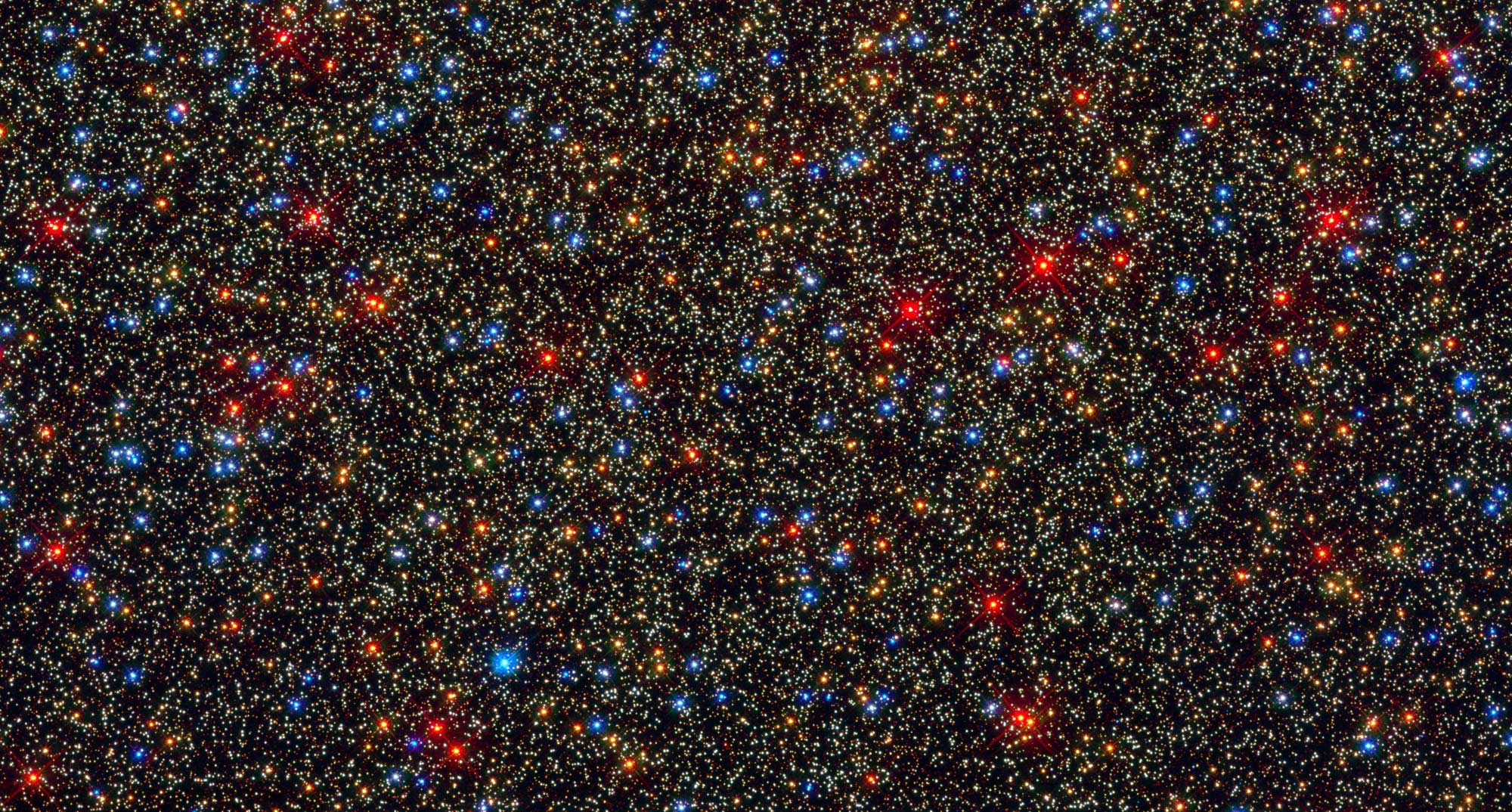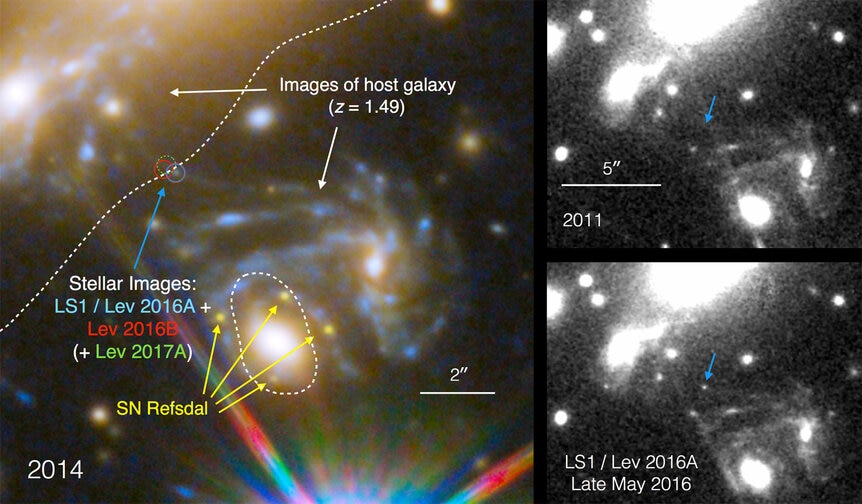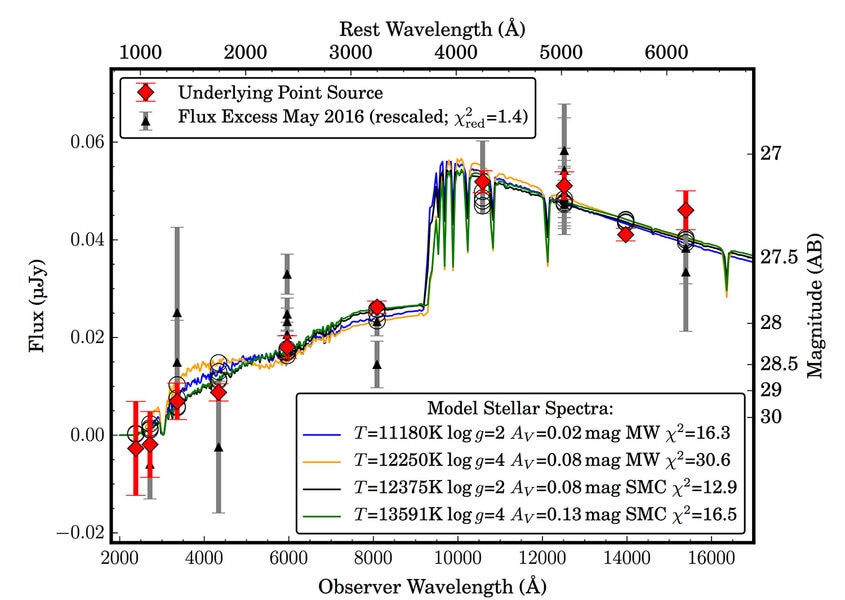Create a free profile to get unlimited access to exclusive videos, sweepstakes, and more!
The farthest star

UPDATE April 2, 2018: This news was just announced as an official Hubble press release, but if you’re a regular BA reader you may have seen this exact story here on my blog back in July 2017! I wrote about this exciting result after seeing it described on AstroBites, a site written by astronomy graduate students about interesting scientific results published in professional journals. So, you heard it here second! :)
This is incredible: Due to a quirk of cosmic geometry, astronomers have detected the light from the farthest individual star ever seen. How far away is it?
Over nine billion light-years away.
Yes, you read that right. Nine. Billion. Light-years.
A single star, from that distance. Holy yikes. Seriously, when I read about this the hairs on the back of my neck stood up. This is seriously amazing, so much so that for a moment I couldn’t believe it was real. Then I read the paper, played with the math a little, and, sure enough, this appears legit.
Normally, a star this far away would be far, far too faint to see. Like, hundreds of times too faint! However, in this case, we caught a break from the Universe: The light from the star has been hugely magnified by the gravity from a cluster of galaxies between us and it.
Here’s how this works. Any object with mass — a galaxy, a star, you, me — bends space, literally warps it. We perceive that bending as gravity. If you shoot a rocket past the Moon, the gravity of the Moon bends the path of that rocket.
This happens with light, too. Like a car following a curve in the road, a photon (a particle of light) traveling through the Universe will have its path slightly bent this way and that as it passes by massive objects. The more massive the object (and the closer the photon flies past it) the more the light gets bent. We call objects like these gravitational lenses, because a lens is an object that bends light.
There are a lot of things that can happen because of this. For example, the light from a distant exploding star (called a supernova) goes off in all directions. But if some of that light passes a galaxy, a bit of it that might otherwise miss us gets bent toward us by the gravity of that galaxy. We wind up seeing that light! Sometimes that means we see multiple images of the same object, and sometimes it means the light from a single object gets amplified, making it appear brighter.
About 5 billion light-years from Earth is a cluster of galaxies called MACS J1149+2223. It’s a collection of a handful of galaxies in a group a few million light-years across. It was first discovered in 2007, but in 2014 it generated a lot of excitement among astronomers because a supernova appeared near it. But the supernova was not in any of the galaxies in the cluster; it was from a much more distant galaxy, well over 9 billion light-years away. The light from the supernova passed through the cluster on its way to us, and because of that had its light bent. The gravity of the cluster split it into four separate images, making it the first multiply lensed supernova ever seen.
Astronomers have been observing MACS J1149 every few months, to keep track of the supernova. When they looked at an image taken in April 2016, they saw something peculiar. A point source (literally, a dot of light) not too far from the supernova appeared to change brightness. This is unusual, and could mean many things: Another supernova, a time-delayed image of the first supernova (because the light travels along different paths, the multiple images of one supernova arrive at Earth at different times), or some other type of variable object.
[LS1, the farthest star ever seen by humans. The star (left) is indicated by the blue arrow; the spiral galaxy host is seen twice due to multiple lensing by the cluster MACS J1149. The supernova (nicknamed "Refsdal") is labeled as well. The star didn't appear in a Hubble image from 2011 (top right), but was in another taken in 2016 (bottom right). It physically moved a tiny bit, changing the amount of lensing, making it brighter. Credit: Kelly et al.]
What they found, though, was astonishing: The colors of the object were a solid match for a star. In fact, it appears to be what’s called a blue supergiant, a star that’s more massive, much larger, and hotter than the Sun. Blue supergiants are stars nearing the ends of their lives; they’ve run out of useable hydrogen in their cores to fuse, and due to complicated processes their cores become much hotter, which makes the outer layers of the star swell up and become enormously brighter. Some of the brightest stars in the night sky are blue supergiants, like Rigel in Orion and Deneb in Cygnus. They dubbed this newly discovered object LS1, for Lensed Star 1.
Even though they can be over 10,000 times brighter than the Sun, a blue supergiant 9 billion light-years away would still be far too faint to see, even with Hubble. However, that’s where the gravitational lens helps us out! It boosted the apparent brightness of LS1 by about 600 times, making it visible in the Hubble image.
[The solid lines indicates the spectrum of a blue supergiant, adjusted for distance to the host galaxy of LS1. The red diamonds are the colors measured in the Hubble images. It's a remarkably good fit. Credit: Kelly et al.]
Once they found it in the 2016 images, the astronomers found it in other data as well. The apparent brightness of the star changed over time in the images. While a blue supergiant can change its brightness, it’s more likely LS1 is moving as it orbits the center of its own galaxy, and as it does so the effects of the gravitational lens change. That’s because the lens is not a smooth one! The individual galaxies in MACS J1149 all contribute to it, which distorts the lensing. A more distant galaxy which we see on one side of the cluster (say, to the left in the image) would get lensed differently than a galaxy on the other side (on the right).
This happens on smaller scales, too. Individual lumps of mass in the cluster can cause sharp changes in the lens on very small scales. If the star is moving in space rapidly enough, it moves relative to those lens distortions, causing sudden changes in its brightness. This amplification of the star’s brightness happened several times over the years, including once where it was magnified by a factor of about 2000!
Interestingly, in observations from May 2016, LS1 peaked in brightness twice, which may indicate it’s not a single star, but a binary, two blue supergiants in orbit around one another. That’s rare, but does happen, so it’s certainly a possibility.
So, what does all this mean? Well, scientifically, it’s very interesting indeed. Since this star (or stars) is too faint to see normally, it gives us a glimpse into a galaxy that otherwise would be too distant to study. It also gives us information on the small-scale distribution of mass in MACS J1499, since the amount of magnification depends on how matter is spread around (in fact, in some images a second star popped into view near LS1, which may be a multiple image of it as well).
But what does this mean to you? Well, let me show you.
Go outside at night, and look up. See all those stars? Those are all inside our own galaxy, the Milky Way. In fact, the vast majority of the stars you see are only a few dozen or maybe hundred light-years away. Only a handful of naked-eye visible stars are more than 1000 light-years away (like the aforementioned Rigel and Deneb).
Yet our galaxy is 100,000 light-years across, so all the stars you can see are local. Using big telescopes we can see individual stars in nearby galaxies, and the farther away the galaxy the fewer we see. Even Hubble can only pick out the superstars when they’re so far away.
And yet here we are, with this star. A massive, luminous, possibly binary monster more than halfway across the Universe, visible because of a natural happenstance amplifying its light. Because of that, we can see this star that is well over a million times farther away than any other star you can see in the sky with your eye.
Some people tell me that science is boring. I can’t imagine what Universe they’re living in.
Tip o’ the redshifted spectrum to AstroBites. You should subscribe to them if you want technical details on pretty cool new journal papers.
















